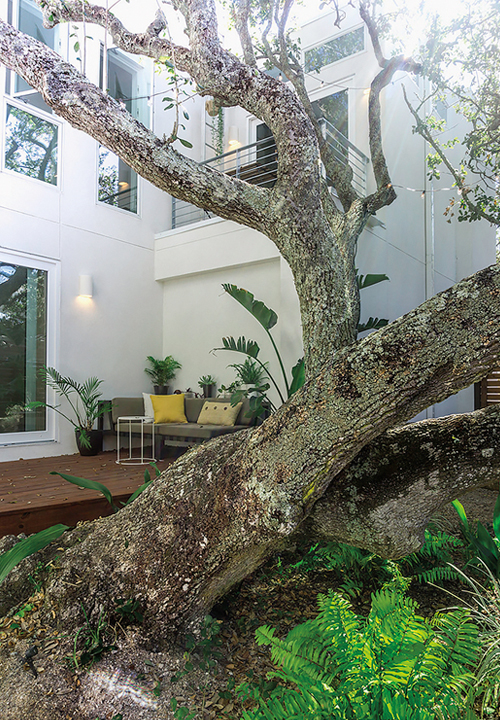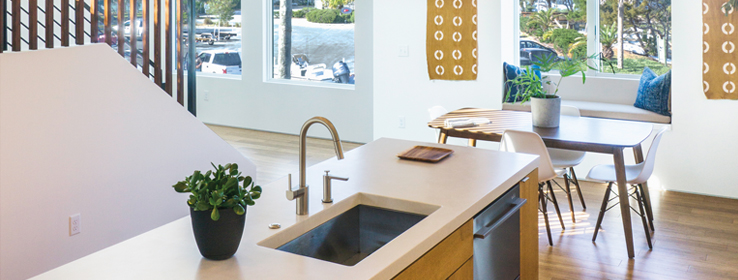Architect Rory Reynolds’s LEED Platinum “The Live Oak House” in St. Augustine, Florida, stars Mother Nature.
By Tad Simons
Architect Rory Reynolds’s “The Live Oak House” in St. Augustine, Florida — so named because it’s built around a 75-year-old oak tree — was designed from the outset to be a LEED Platinum–certified project. But the house was so ecologically innovative that it also received Florida Green Building Coalition Platinum and Florida Water Star Gold certifications, and recently won the USGBC’s 2017 Green Home of the Year award.
Reynolds chose to paint “The Live Oak House’s” interior with Sherwin-Williams Harmony® Interior Acrylic Latex for several reasons. First, the coating met the state of Florida’s requirements for volatile organic compounds (VOCs), which is essential for LEED certification. Plus, Harmony paint delivered the aesthetic and other performance qualities Reynolds needed at the right price point for the project — which he felt no other paint could provide.
“For LEED, flat paint needs a VOC rating of 50g/liter or less,” Reynolds says. “Sherwin-Williams Harmony paint has a rating of zero, so we were pretty excited about that.”
Harmony paint contains a unique technology to help reduce common odors that linger in a space and it inhibits the growth of mold and mildew on the paint surface. It also contains an exclusive formaldehyde-reducing technology that reduces VOCs often released from possible sources like carpet, insulation, cabinets and fabric. Reynolds and his interior designer, Mandy Cheng, looked at another manufacturer’s paint, but it didn’t have the environmental properties they required, he says, and it cost more than their budget would allow.
“Sherwin-Williams Harmony far exceeded the VOC levels we needed to achieve, and the price fit our budget,” Reynolds says.

To get the aesthetic qualities they wanted with Harmony, Reynolds and Cheng used a custom white color in a flat finish, resulting in a pure flat white that they used throughout “The Live Oak House’s” interior. The goal, says Reynolds, was to suffuse the interior with a soft white that recedes into the background to emphasize the home’s elegant architectural features and natural wood floors. During the day, shadows from the oak tree outside play on the walls as well, creating a moving tableau of nature and light.
Moisture considerations were also key. “This was an unvented home, so having a high-quality paint that resists mildew and reduces odors was extremely important to us,” Reynolds says.
He also learned first-hand how easily Harmony paint can be cleaned. “After we were done, there were some scuffs on the walls that we thought we were going to have to repaint over,” Reynolds recalls. “But after I went over it with a Magic Eraser and a rag, it looked just like new.”
That was a year ago, he says, and the paint looks as good as the day they applied it.








